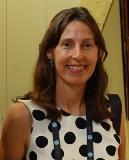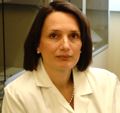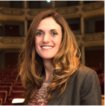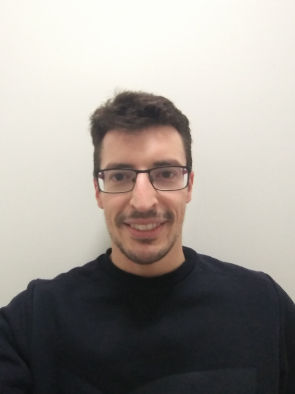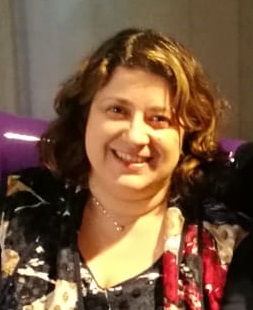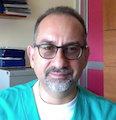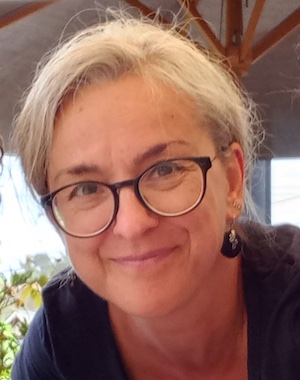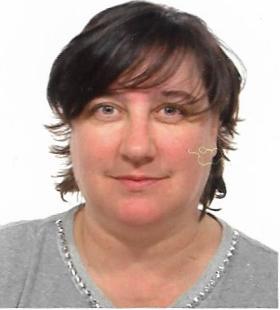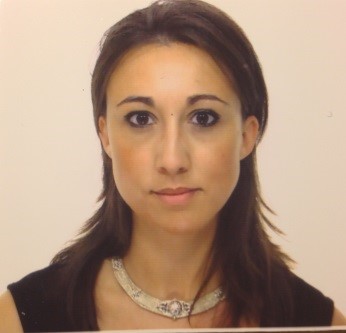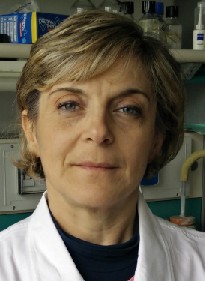Studying at the University of Verona
Here you can find information on the organisational aspects of the Programme, lecture timetables, learning activities and useful contact details for your time at the University, from enrolment to graduation.
Academic calendar
The academic calendar shows the deadlines and scheduled events that are relevant to students, teaching and technical-administrative staff of the University. Public holidays and University closures are also indicated. The academic year normally begins on 1 October each year and ends on 30 September of the following year.
Course calendar
The Academic Calendar sets out the degree programme lecture and exam timetables, as well as the relevant university closure dates..
| Period | From | To |
|---|---|---|
| I semestre | Oct 1, 2020 | Jan 29, 2021 |
| II semestre | Mar 1, 2021 | Jun 11, 2021 |
| Session | From | To |
|---|---|---|
| Sessione invernale d'esame | Feb 1, 2021 | Feb 26, 2021 |
| Sessione estiva d'esame | Jun 14, 2021 | Jul 30, 2021 |
| Sessione autunnale d'esame | Sep 1, 2021 | Sep 30, 2021 |
| Session | From | To |
|---|---|---|
| Sessione estiva di laurea | Jul 14, 2021 | Jul 14, 2021 |
| Sessione autunnale di laurea | Oct 13, 2021 | Oct 13, 2021 |
| Sessione invernale di laurea | Mar 11, 2022 | Mar 11, 2022 |
| Period | From | To |
|---|---|---|
| Festa dell'Immacolata | Dec 8, 2020 | Dec 8, 2020 |
| Vacanze Natalizie | Dec 24, 2020 | Jan 3, 2021 |
| Epifania | Jan 6, 2021 | Jan 6, 2021 |
| Vacanze Pasquali | Apr 2, 2021 | Apr 5, 2021 |
| Festa del Santo Patrono | May 21, 2021 | May 21, 2021 |
| Festa della Repubblica | Jun 2, 2021 | Jun 2, 2021 |
| Vacanze estive | Aug 9, 2021 | Aug 15, 2021 |
Exam calendar
Exam dates and rounds are managed by the relevant Science and Engineering Teaching and Student Services Unit.
To view all the exam sessions available, please use the Exam dashboard on ESSE3.
If you forgot your login details or have problems logging in, please contact the relevant IT HelpDesk, or check the login details recovery web page.
Should you have any doubts or questions, please check the Enrollment FAQs
Academic staff
 vittoria.cozza@univr.it
vittoria.cozza@univr.it
Study Plan
The Study Plan includes all modules, teaching and learning activities that each student will need to undertake during their time at the University.
Please select your Study Plan based on your enrollment year.
1° Year
| Modules | Credits | TAF | SSD |
|---|
One course to be chosen among the followingOne course to be chosen among the followingTwo courses to be chosen among the followingThree courses to be chosen among the following2° Year activated in the A.Y. 2021/2022
| Modules | Credits | TAF | SSD |
|---|
| Modules | Credits | TAF | SSD |
|---|
One course to be chosen among the followingOne course to be chosen among the followingTwo courses to be chosen among the followingThree courses to be chosen among the following| Modules | Credits | TAF | SSD |
|---|
| Modules | Credits | TAF | SSD |
|---|
Two courses to be chosen among the following ("Biotechnology in Neuroscience" and "Clinical proteomics" 1st and 2nd year; the other courses 2nd year only)Legend | Type of training activity (TTA)
TAF (Type of Educational Activity) All courses and activities are classified into different types of educational activities, indicated by a letter.
Medical genetics and pharmacogenomics (2020/2021)
Teaching code
4S003672
Academic staff
Coordinator
Credits
6
Language
English
Scientific Disciplinary Sector (SSD)
MED/03 - MEDICAL GENETICS
Period
II semestre dal Mar 1, 2021 al Jun 11, 2021.
Learning outcomes
The course provides the principles of medical genetics and pharmacogenomics. It aims to show when and how the genetic factor, defined at different resolution levels (from chromosomes to single nucleotide) plays a role in the variability of Mendelian and complex diseases, and of the variability of drug-response. The course aims to provide students with the tools to be able to evaluate critically and independently the results of scientific research in the field of medical genetics and pharmacogenomics.
Program
Human chomosomes, standard karyotype and numerical and structural chromosomal abnormalities. Chromosomal polymorphisms and CNV.
- Chromosomic syndromes and Genome disorders. Uniparental disomy . Uniparental diploidy
- Genetic counselling, genetic tests, prenatal diagnosis. - Parent-of-origin effects, imprinting and genomic imprinting disorders.
Diseases due to expansion of unstable repeat sequences (dynamic mutations). Unstable repeat expansion, premutation and full mutation, Sherman's paradox, anticipation.
-- Hereditary. Mendelian inheritance and atypical inheritance patterns: Mitocondrial inheritance
- Bases of human genetics. Human genome organization, gene order on human chromosomes. Structure of eukaryotic genes. Repetitive DNA. DNA polymorphisms: RFLP, SNP, VNTR, minisatellites, microsatellites. Genetic markers, physical and genetic maps. Linkage Disequilibrium.
- Pedigree construction and analysis.
- Gene and chromosomal mutations, mutation nomenclature. Mutagenesis and DNA repair. Molecular pathology of the gene: biological relevance and effect on the phenotype of mutations, methods for mutation classification as disease-causing. Gain and loss of function mutations, dominance and recessiveness. Genotype-phenotype correlation.
- Genetic variation in individuals and populations. Mutation and polymorphism. The Hardy-Weinberg law, allele and genotype frequency calculation. Inbreedeng and relatedness.
- Mendelian disease gene and mutation identification. Positional and functional cloning. Linkage analysis, human gene mapping, sequencing. Identification of disease causing mutations. Direct and indirect mutation analysis.
- Genetic testing. Diagnostic, presymptomatic, susceptibility, heterozygote identification, population genetic screening, neonatal screening.
- Modifier genes and complexity in single-gene disorders.
- The inheritance of multifactorial traits. Genetics of common disorders with complex inheritance, genetic and environmental factors, qualitative and quantitative traits, genetic predisposition to common diseases. General aspects od the identification of genetic factors in complex diseases. Segregation analysis: Mapping of complex traits, Familial and twin studies.
-Parametric and Non parametric Linkage. Linkage disequilibrium. Linkage and association analyses. Candidate gene studies, genome wide association studies (GWAS).
- Pharmacogenetics and precision medicine. Individual variation of drug response. Genes and polymorphisms of drug metabolism and mechanism of drug action. Molecular diagnostics of pharmacogenetic traits.
- Cancer genetics.
- Genome scan. Study design, quality control of data, imputation, risk assessment, linkage and association.
- Genome sequencing and Genomic, Exomic, and Transcriptomic analysis. Gene counting. Isoforms. Bioinformatics and Genomics.
| Author | Title | Publishing house | Year | ISBN | Notes |
|---|---|---|---|---|---|
| Strachan T. and Read A. | Human Molecular Genetics (Edizione 5) | Garland Science (CRC press) | 2018 | ||
| Bradley Schaefer G., Thompson J.N. jr. | Medical Genetics – An integrated approach (Edizione 1) | McGraw-Hill | 2014 | ||
| Nussbaum, McInnes, Willard | Thompson & Thompson Genetics in Medicine (Edizione 8) | Elsevier | 2016 |
Examination Methods
The task of the exam consists in verifying the comprehension of course contents and the ability to properly describe their arguments with appropriate scientific language.
Examination methods are the same for students who attended and for those who did not attend the course.
The exam consists of an oral test based on all the course contents
The exam is passed if the evaluation is greater or equal to 18/30.
Type D and Type F activities
| years | Modules | TAF | Teacher |
|---|---|---|---|
| 1° 2° | Python programming language | D |
Vittoria Cozza
(Coordinator)
|
Career prospects
Module/Programme news
News for students
There you will find information, resources and services useful during your time at the University (Student’s exam record, your study plan on ESSE3, Distance Learning courses, university email account, office forms, administrative procedures, etc.). You can log into MyUnivr with your GIA login details: only in this way will you be able to receive notification of all the notices from your teachers and your secretariat via email and soon also via the Univr app.
Graduation
Deadlines and administrative fulfilments
For deadlines, administrative fulfilments and notices on graduation sessions, please refer to the Graduation Sessions - Science and Engineering service.
Need to activate a thesis internship
For thesis-related internships, it is not always necessary to activate an internship through the Internship Office. For further information, please consult the dedicated document, which can be found in the 'Documents' section of the Internships and work orientation - Science e Engineering service.
Final examination regulations
Students earn the Master’s degree in Molecular and Medical Biotechnology after successfully completing the final examination, for which students are required to write a dissertation in English, to be presented in front of a Graduation Committee. By writing the dissertation, students will have the opportunity to demonstrate the knowledge and skills acquired. The dissertation shall be an experimental research work on a specific topic, to be carried out in university research laboratories, or in public or private institutes recognised in the biotechnology sector.
The dissertation shall be written by the student under the guidance of a Supervisor. In order to be admitted to the final examination, the student must have acquired all CFU credits in the training activities included in the Study Plan, except those specifically awarded upon completion of the dissertation.
The Graduation Committee shall evaluate each candidate, based on their achievements throughout the entire degree programme, carefully assessing the degree of consistency between educational and professional objectives, as well as their ability for independent intellectual elaboration, critical thinking, communication skills and general cultural maturity, in relation to the objectives of the programme.
40 CFU are awarded upon completion of the Master’s degree dissertation, which can be presented either in English or in Italian. Master’s degree dissertations can be either internal (written at the University or Verona) or in collaboration with an external institution/body.
For each dissertation, a Dissertation Committee shall be established: this will include one Supervisor, one or more co-supervisors (optional), and two examiners. Any professors belonging to a department of the School of Science and Engineering or the School of Medicine and Surgery at the University of Verona may act as Supervisor. Researchers working in external research institutes, research grant holders, post-doctoral fellowship holders and PhD students may act as co-supervisors. The examiners, who must be professors of either the School of Natural Sciences and Engineering or the School of Medicine and Surgery, shall be appointed by the Graduation Committee at least 25 days before the final examination, once the student's eligibility to take the final examination has been verified.
The activities of the Dissertation Committee are not subject to official invitations and will take place by agreement between the persons concerned no later than 15 days before the graduation ceremony, at which time only the awarding of the Master’s degree will take place.
At the end of the examination, the Dissertation Committee will draw up a brief evaluation note giving a summary mark (from 0 to 8 points). This note shall be sent to the relevant Teaching and Student Services Unit, no later than the day before the graduation ceremony, for the subsequent formulation of the final grade by the Graduation Committee, which shall then award the degree.
Evaluation of the dissertation
Students will be given about 30 minutes to present their dissertation. The Dissertation Committee will evaluate the work based on the following criteria:
- level of in-depth analysis in relation to the most recent developments in the Molecular and Medical Biotechnologies areas;
- scientific and/or technological outcomes of the dissertation;
- student’s critical thinking;
- student’s experimental development;
- student’s ability to carry out independent work (this point will not be assessed by the examiners);
- value of the methodologies used;
- accuracy in planning and writing the dissertation;
- communication skills in presenting the dissertation.
Graduation mark
The graduation mark (based on a 110-point scale) is a whole value between 66/110 and 110/110 and is calculated by adding together the following elements (then rounding the result to the nearest whole number, e.g. 93.50 => 94; 86.49 => 86):
- 1) the average of the marks gained in the modules, weighted according to CFU, converted to a 110-point scale;
- 2) evaluation of the dissertation and the oral presentation during the final examination, based on the following methods:
- a) a maximum of 11 points will be awarded for the presentation and the dissertation. These will count as follows: 8 points awarded by the Dissertation Committee, which will evaluate the dissertation and presentation by assigning each of the points 1-8 listed above a coefficient between 0 and 1 (fractional coefficient with one decimal place);
- b) 3 points will be awarded by the Dissertation Committee by unanimous decision, based on the student’s curriculum vitae. Specifically, in order to award the final mark, the Committee will take into account the following: any cum laude honours obtained in the exams taken during the degree programme; participation in internships officially recognised by the University; elective modules; and the achievement of the degree in a time that is shorter than the normal duration of the degree programme. Students who are awarded less than 11 points for their dissertation may be awarded 2 extra points, if: - they have earned at least 12 CFU credits by taking part in international mobility programmes; - they graduate within the normal duration of the degree programme.
- c) the sum of the points resulting from (a) and (b).
If the resulting score is 110/110 or above, the Graduation Committee may decide to award cum laude honours, in which case the student must have:
- a minimum weighted average mark of 104/110 (without rounding up) or
- a minimum weighted average mark of 102/110 (without rounding up) and must have been awarded cum laude honours in at least 3 modules during the degree programme. Under the current legislation, cum laude honours are conferred by unanimous decision of the committee.
External dissertations
An external dissertation is a work carried out in collaboration with an institution/body other than the University of Verona. In this case, the topic of the dissertation must be agreed in advance with a Supervisor from the LM-9 degree programme. In addition, the student must indicate at least one co-supervisor belonging to the external institution/body, who will support the student during the work on the dissertation. The Supervisor and the co-supervisors must be indicated in the online graduation application. The scientific outcomes of the dissertation will be available to all parties involved. In particular, the contents and results of the dissertation are to be considered public.
List of theses and work experience proposals
| theses proposals | Research area |
|---|---|
| Studio delle proprietà di luminescenza di lantanidi in matrici proteiche | Synthetic Chemistry and Materials: Materials synthesis, structure-properties relations, functional and advanced materials, molecular architecture, organic chemistry - Colloid chemistry |
Attendance
As stated in the Teaching Regulations for the A.Y. 2022/2023, attendance is not mandatory. However, professors may require students to attend lectures for a minimum of hours in order to be able to take the module exam, in which case the methods that will be used to check attendance will be explained at the beginning of the module.

 +39 045 802 7949
+39 045 802 7949



